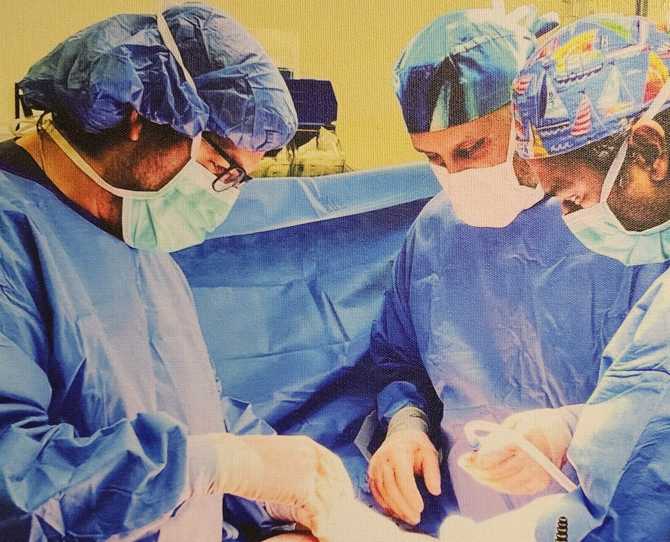


You will be kept without anything to eat or drink immediately after the surgery until you have some return of bowel function. This can take on average anywhere from 2-5 days. It may, however, be earlier or later than this. Once you have evidence of bowel function, you will be started on a bland liquid diet such as Gatorade, tea, coffee, water, soup and crackers, or jell-o. If you tolerate this, you will slowly be increased to a solid diet before discharge. You will be on a soft-mechanical bland diet when you get home from surgery. You should stay on this diet for 2-3 weeks after the surgery. If you are doing well, then you can advance to a regular diet as tolerated.
As soon as you reach home, you may resume normal ad lib activity. You are encouraged to begin walking and resuming household activity as tolerated immediately. Going up and down stairs is also Ok. You should refrain from engaging in any strenuous activity such as running, riding a bike, heavy exercising in a gym, etc. for at least 5-6 weeks. You should also avoid any heavy lifting greater than 10-15 lbs. for 5-6 weeks. After that, you may usually resume any activity as tolerated.
You will usually have a vacuum-sealed bandage on your incision immediately after surgery. Leave this bandage on for 7 days after the surgery. Your surgeon or nurse will change your bandage for the first time, unless you are home already, in which case you will remove it yourself. The incision will most likely be closed with small metal clips called skin staples under that bandage. These will eventually be removed by your surgeon or a nurse, usually about 14-21 days after the surgery. This is done relatively painlessly using a specialized staple remover.
You may shower starting after the vacuum-sealed bandage has been removed. Running soap and clean water over the incision is Ok but avoid submersing the incision in any dirty water such as baths, lakes, swimming pools, jacuzzies, etc. for at least 3-4 weeks. You may apply ice to the wound for 15–30-minute intervals at a time for pain or swelling, for several days after the surgery. A small amount of bleeding, redness, and swelling may be normal. If there is any excessive pain, bleeding, swelling, redness around the wound, green/white drainage, or fever, please call your surgeon immediately.
Once you have been advanced to an oral diet, you may resume all your normal medications after surgery except for any anticoagulants. You should wait at least 48 hours after surgery before beginning any anticoagulants, as long as there is no external signs of bleeding or bruising. You may need to wait longer, but please consult your surgeon first.
You will most likely be sent home with a prescription for narcotic pain medications. Use the narcotics as directed on the prescription. You may take less than what is indicated on the bottle, but not more. Be sure to take narcotic pain medication with food so as not to upset your stomach. You may begin to taper your narcotic medication as tolerated and discontinue them as soon as possible. As you are tapering off the narcotics, you may transition over to Ibuprofen. You should not drive or operate any mechanical equipment while on narcotic medications. Wait for at least 24 hours after discontinuing the narcotic medications before driving.
It is not unusual for patients who have been through surgery, a general anesthesia, and who are taking narcotics to become constipated. This can often be remedied by increasing your activity and making sure you stay hydrated. When you go home, you will initially be recommended to stay on a low-fiber diet and avoid fiber supplements, for at least 2-3 weeks. However, you should be taking an over-the-counter stool softener such as Colace or Senokot daily. You should have a bowel movement every day by the time you get home. If you go 1-2 days without having a bowel movement, call the office for further instructions. In general, you will be recommended to avoid any oral laxative medications or enemas during the recovery period. If none of these measures work or if you begin to have significant abdominal pain, nausea/vomiting, or diarrhea, please contact your surgeon immediately.
You will be instructed as to when you should return to the office on your discharge instructions. You should call the office to schedule this. You will usually be seen again approximately 2-3 weeks after the surgery. If you had a bowel specimen from your surgery, the pathology department usually takes 3-5 days to send results of your specimen analysis to our office. If there is important information from the report to tell you before your follow-up appointment, you will be notified immediately. Otherwise, we will cover the results of the pathology during your follow-up appointment.